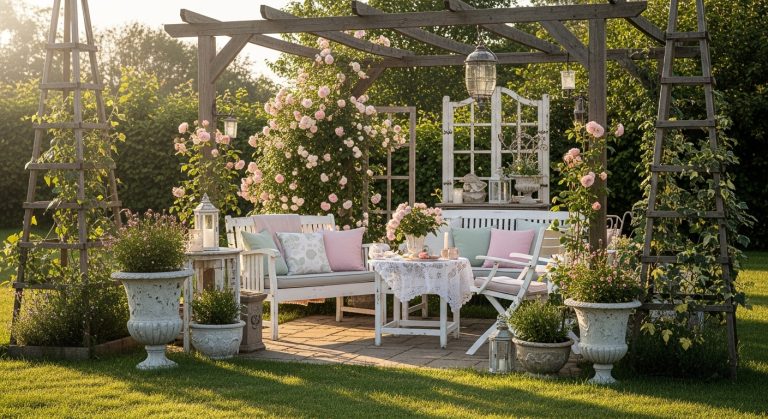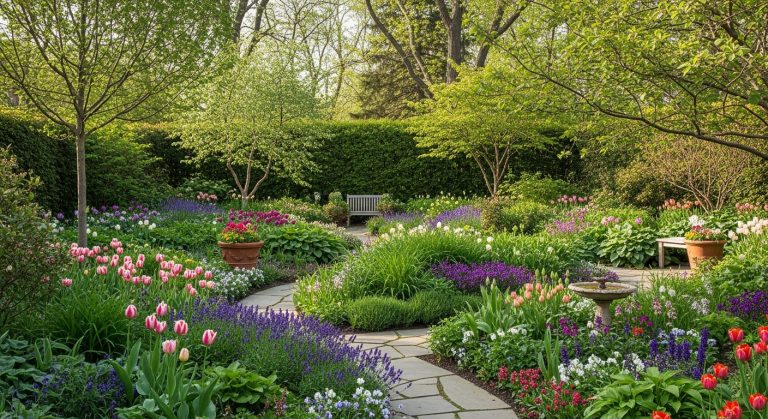Raised Garden Beds Irrigation: 15 Smart & Stylish Ways to Keep Your Garden Hydrated
Let’s be honest—watering your garden shouldn’t feel like running a marathon with a hose. If you’ve ever stood under the summer sun juggling sprinklers and timers while your plants still look thirsty, you know what I mean. The good news? Setting up proper raised garden beds irrigation systems can turn that chaos into a smooth, near-automatic process.
Whether you’re working with a small backyard plot or a full-on edible paradise, I’ve rounded up 15 irrigation ideas that actually work. These are based on real experiences, expert setups, and a few fun “I can’t believe this works so well” moments. Ready? Let’s dig in.
1. Drip Irrigation: The MVP of Raised Beds
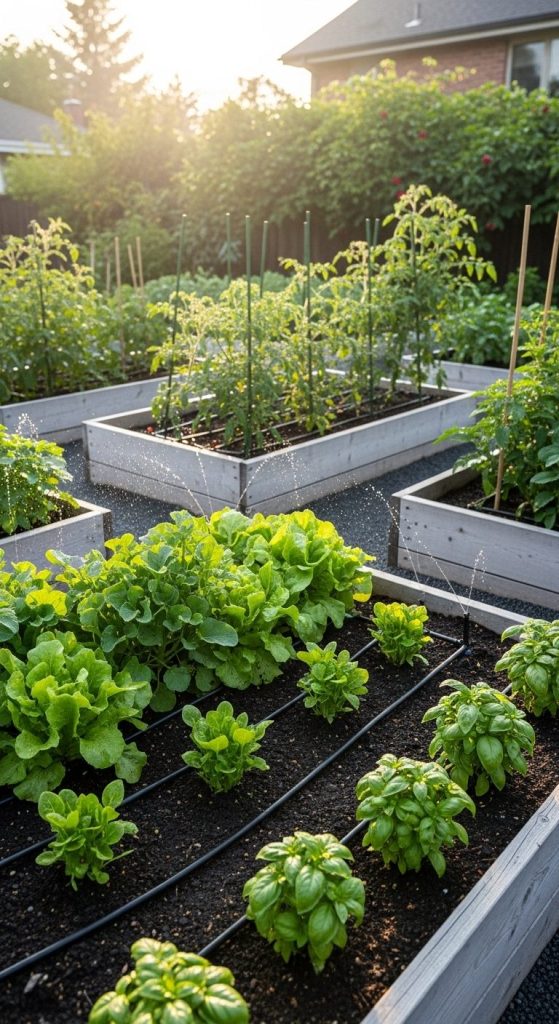
If you’ve got limited time (and who doesn’t?), drip irrigation is the best friend your raised beds will ever have. It delivers water right to the roots, minimizing waste and keeping leaves dry—aka, fewer fungal problems.
Pros:
- Conserves up to 50% more water than traditional sprinklers.
- Super easy to automate with a timer.
- Keeps soil evenly moist.
Cons:
- Setup can be a little fiddly at first.
- Clogging can occur if you skip filtration.
Pro Tip:
Use a pressure regulator and filter combo. It’s not optional—trust me. I learned the hard way after watching one line turn into a mini geyser.
2. Soaker Hoses for Lazy Gardeners (Like Me)
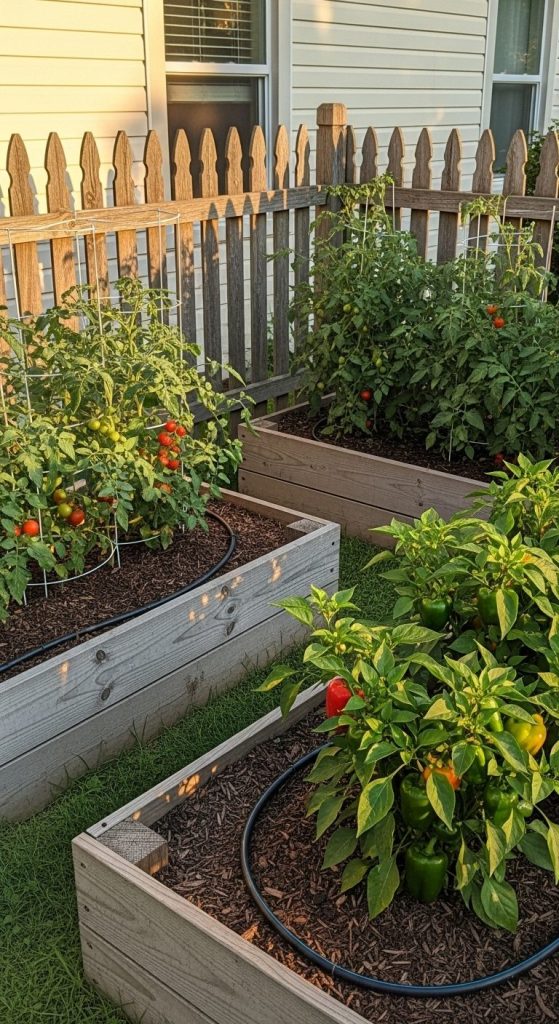
Ever wanted irrigation that feels like “set it and forget it”? Soaker hoses ooze water along their length—perfect for dense plantings in raised beds.
Pros:
- Inexpensive and low-tech.
- Works quietly under mulch for stealth watering.
- Great for long, rectangular raised beds.
Cons:
- Doesn’t deliver precise control for each plant.
- Needs occasional repositioning as plants grow.
IMO: Soaker hoses are perfect for gardeners who don’t need perfection but still want reliable hydration without the hassle.
3. Micro-Spray Emitters: When You Want Coverage and Control
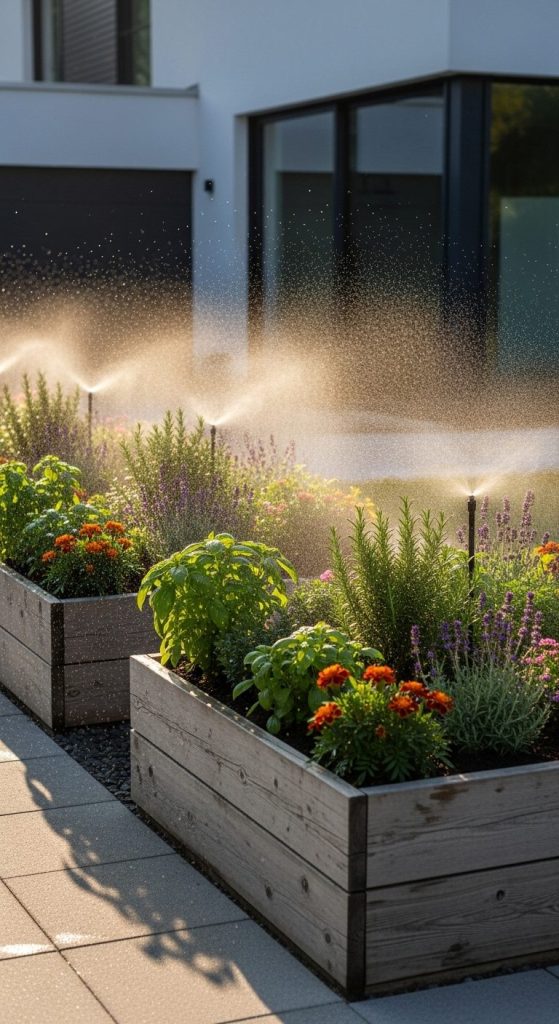
Micro-sprayers are the Goldilocks of irrigation—somewhere between a sprinkler and drip system. They’re ideal if your raised beds host a mix of thirsty veggies and drought-tolerant herbs.
Pros:
- Adjustable spray patterns and range.
- Visually satisfying to see them misting evenly.
- Easy to reconfigure as plant layout changes.
Cons:
- Can lose efficiency in windy conditions.
- Requires careful spacing to avoid overspray.
Fact Check: According to a 2024 Houzz survey, over 40% of raised-bed gardeners prefer micro-sprayers for mixed-plant setups.
4. DIY Bottle Irrigation (Budget-Friendly Genius)
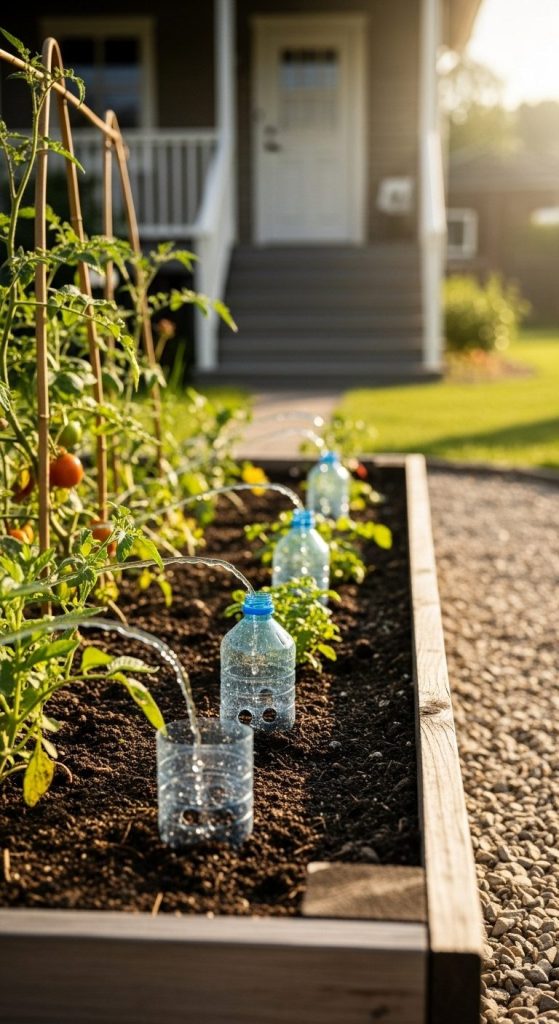
Here’s an old-school hack that still works wonders. Just poke a few holes in a plastic bottle, bury it next to your plants, and fill it with water. Boom—instant slow-release irrigation.
Pros:
- Costs basically nothing.
- Great for small beds or new gardeners.
- Reduces surface evaporation.
Cons:
- Not scalable for large gardens.
- Refilling bottles can get tedious.
Tip: Add a little sand inside before sealing—it slows down flow for longer moisture release.
5. Automated Timers (The “Smart” in Smart Gardening)

If you’re like me and occasionally forget what day it is, a timer will save your plants—and your sanity.
Pros:
- Keeps watering consistent.
- Compatible with drip and soaker systems.
- Perfect for vacation-proofing your garden.
Cons:
- Slightly pricier upfront.
- Needs occasional battery changes.
FYI: Wi-Fi smart timers are trending in 2025, letting you adjust irrigation from your phone. I mean, who doesn’t want to water their basil from a beach chair?
6. Mulch-Integrated Irrigation: The Hidden Hero
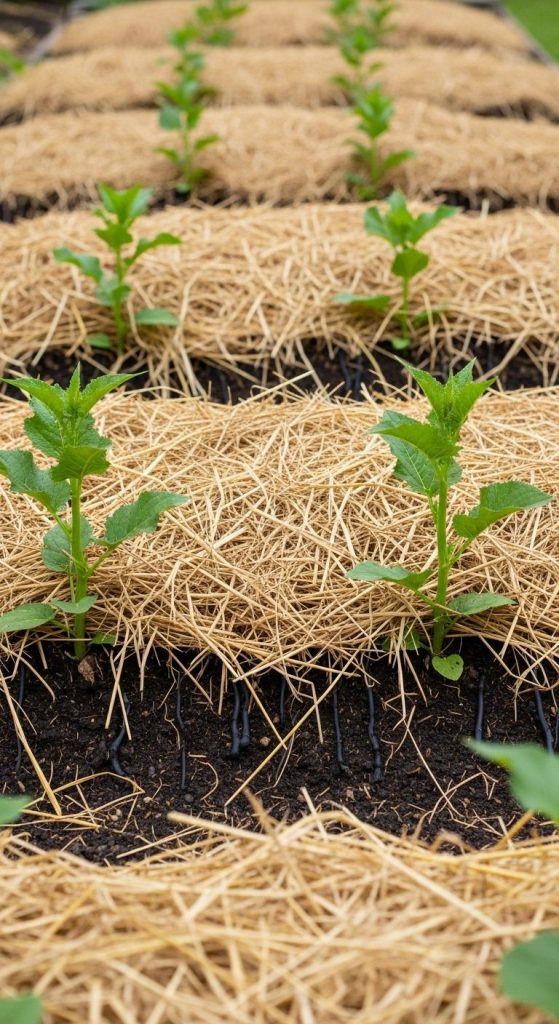
Mulch isn’t just for looks—it’s irrigation’s best sidekick. Combining drip lines under mulch keeps moisture where it belongs.
Pros:
- Reduces evaporation by up to 70%.
- Protects irrigation lines from UV damage.
- Keeps the bed aesthetically neat.
Cons:
- Harder to monitor for leaks.
- Requires mulch refreshes over time.
Personal Note: I once switched to this setup mid-summer and noticed my watering frequency drop by half. That’s not a coincidence.
7. Rainwater Harvesting Systems

If you love sustainability, this one’s for you. Hook up your raised bed irrigation to a rain barrel system and watch your water bill shrink.
Pros:
- Eco-friendly and cost-saving.
- Naturally soft water = happy plants.
- Reduces runoff and erosion.
Cons:
- Setup requires elevation for gravity feed.
- May need a pump for even flow.
Data Bite: According to EPA, rain barrels can save over 1,300 gallons of water per household every summer. That’s a lot of hydration.
8. Capillary Wicking System (Science Meets Gardening)
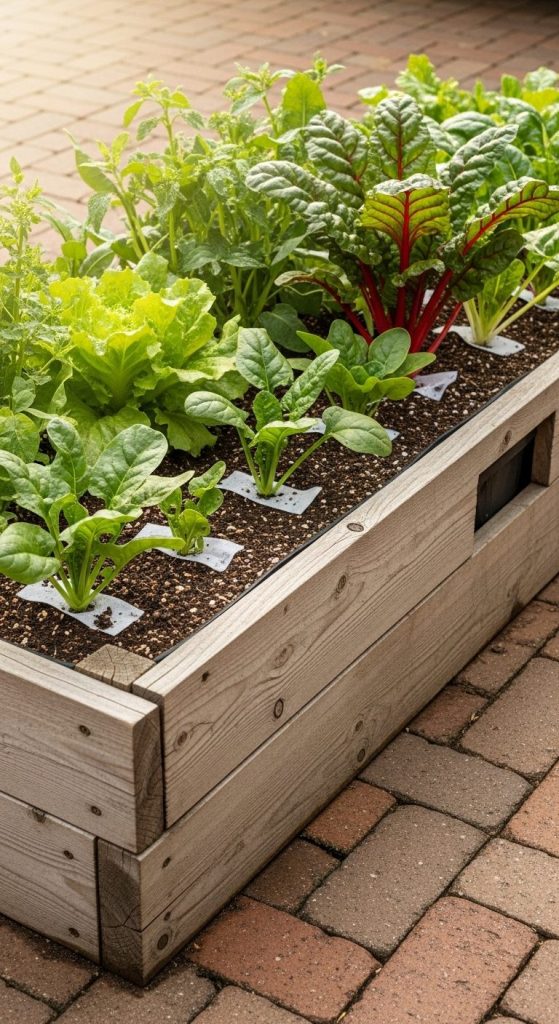
This clever design uses water-absorbent wicks or fabric to pull moisture from a reservoir into the soil.
Pros:
- No electricity or timers needed.
- Self-regulating—plants draw what they need.
- Perfect for raised beds in hot climates.
Cons:
- Initial setup is a bit more DIY-heavy.
- Works best for shallow-rooted plants.
Think of it like your plants sipping from a straw. Neat, right?
9. Subsurface Drip Lines

For gardeners who want sleek, invisible irrigation, subsurface drip lines run underneath the soil, directly targeting the roots.
Pros:
- Zero water loss to evaporation.
- Keeps the surface dry—bye-bye, weeds.
- Great for permanent raised bed installations.
Cons:
- Hard to detect blockages.
- Slightly costlier to install.
Pro Insight: This setup mimics commercial agricultural irrigation—it’s high-tech but worth every penny if you’re serious about efficiency.
10. Gravity-Fed Irrigation
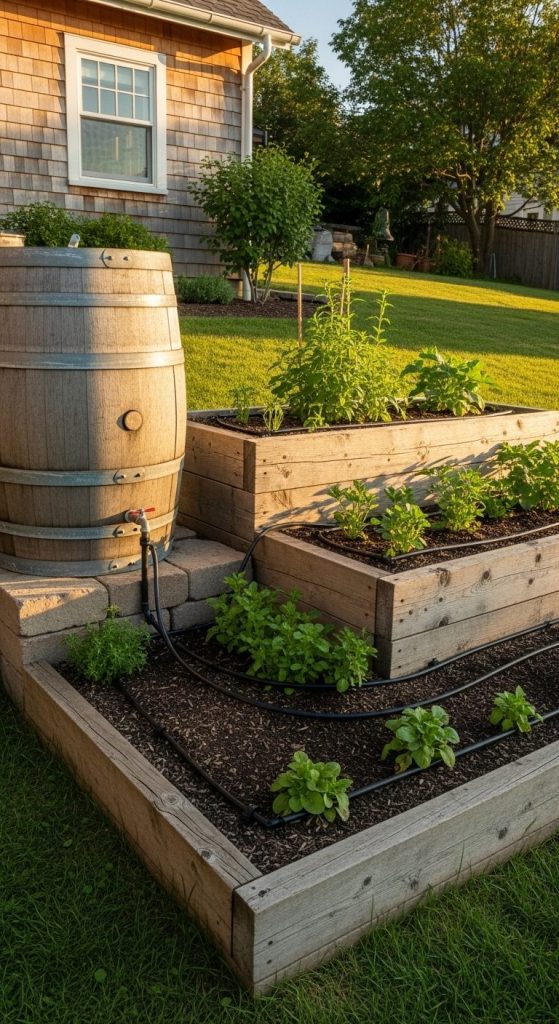
No power? No problem. Use the natural slope of your yard or elevated tanks to gravity-feed water into your raised beds.
Pros:
- Energy-free and sustainable.
- Works well with drip emitters or bottles.
- Simple to maintain.
Cons:
- Requires consistent elevation difference.
- Harder to control pressure evenly.
I used this during a camping garden setup—it was rustic but surprisingly effective.
11. Solar-Powered Irrigation Pumps
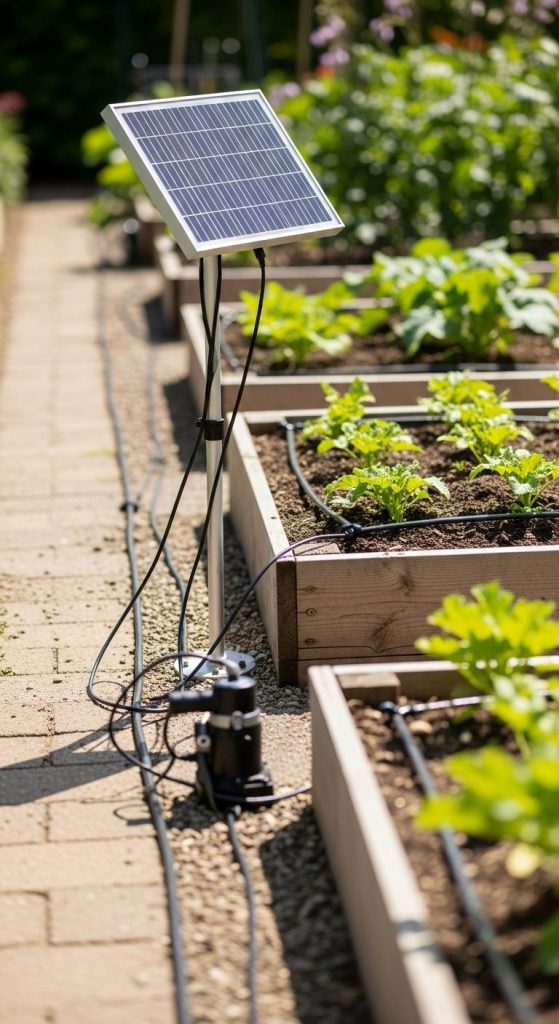
Why not let the sun do the heavy lifting? Solar pumps are eco-smart and ideal for off-grid gardeners.
Pros:
- Renewable energy = zero electricity cost.
- Automatic daytime operation.
- Long-term sustainable choice.
Cons:
- Dependent on sunlight (duh).
- Pricier initial setup.
Fact: Solar irrigation usage has grown by 30% in small-scale gardens since 2023 (Statista).
12. Moisture Sensors & Smart Controllers
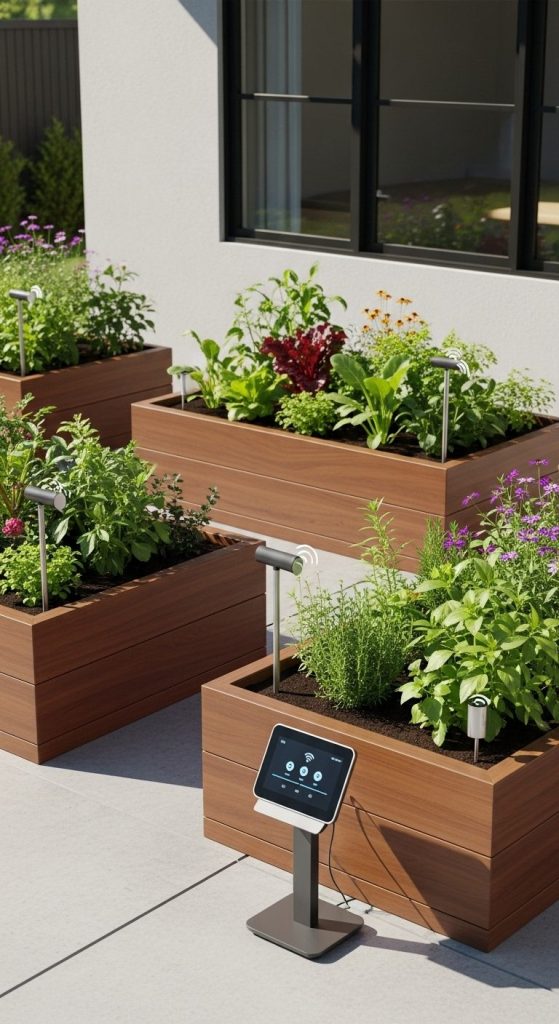
If you love gadgets, this is your playground. Moisture sensors monitor soil and trigger watering only when needed.
Pros:
- Prevents overwatering and root rot.
- Data-driven precision.
- Syncs with smartphone apps.
Cons:
- Tech setup may intimidate beginners.
- Requires calibration.
Pro Move: Combine with drip irrigation for a self-adjusting smart garden. Welcome to the future.
13. PVC Pipe Grid System
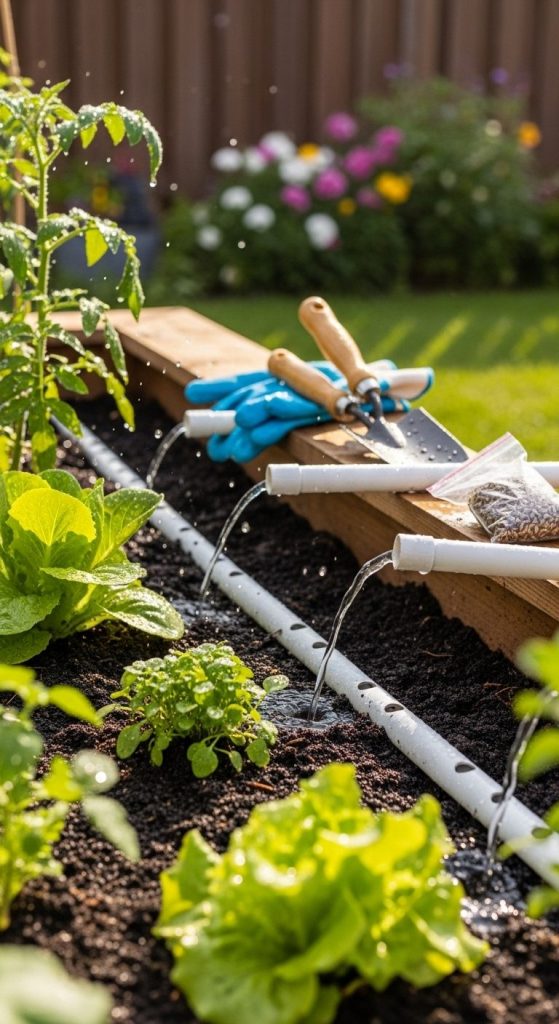
This DIY setup uses drilled PVC pipes to distribute water evenly below the soil surface.
Pros:
- Durable and reusable.
- Customizable for any bed size.
- Delivers even water across the entire area.
Cons:
- Requires drilling and sealing.
- Can clog with sediment over time.
If you love DIY weekend projects, this one scratches that creative itch.
14. Clay Pot (Olla) Irrigation

A centuries-old trick that still outperforms many modern systems. Bury porous clay pots filled with water near your plants—they release moisture slowly as needed.
Pros:
- Ancient, sustainable technique.
- Ideal for dry climates.
- No need for timers or electricity.
Cons:
- Not suited for large raised beds.
- Requires frequent refilling in summer.
Fun Fact: Olla irrigation dates back over 2,000 years and remains popular in arid regions for good reason.
15. Hybrid Systems (Because Why Not Mix It Up?)

Sometimes one system isn’t enough. Combining drip lines with moisture sensors or rain barrels with soaker hoses gives you ultimate control.
Pros:
- Adapts to changing seasons.
- Reduces manual adjustments.
- Saves water long-term.
Cons:
- Slightly complex to manage.
- Requires good planning to avoid overlap.
Once you balance automation with sustainability, it’s gardening bliss.
Conclusion: Smarter Irrigation = Happier Gardens
At the end of the day, raised garden beds irrigation isn’t just about watering plants—it’s about creating a system that saves water, time, and energy. Whether you’re an old-school DIYer or a tech-loving green thumb, there’s a method that fits your rhythm.
So, what’s your pick—solar-powered innovation, gravity-fed simplicity, or the good old drip system? Whatever you choose, one thing’s certain: your plants are about to thank you (in their leafy little way).

Ashley Ellison is a skilled writer and avid bowler. Her passion for storytelling and dedication to the sport have led her to participate in various national bowling leagues. With a unique combination of talents, Ashley approaches every challenge with creativity and a relentless drive to succeed.

